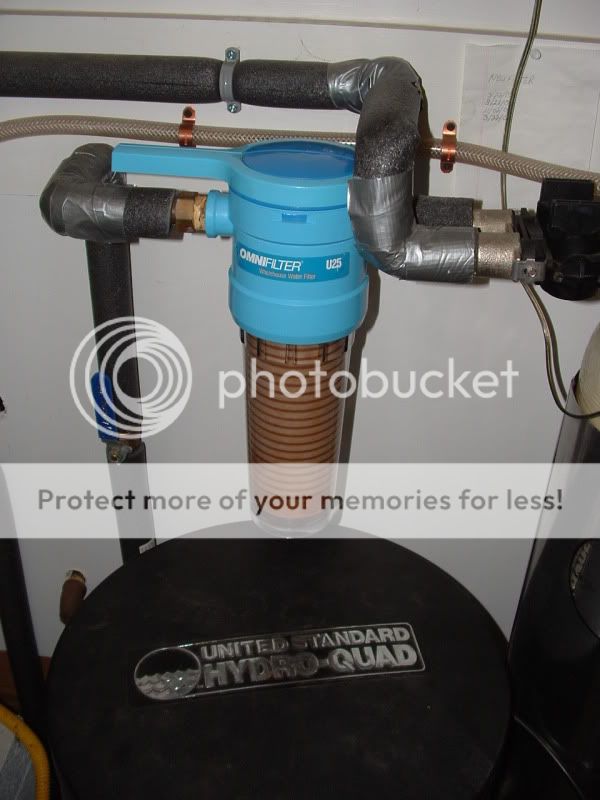JanC
New Member
I'm in the planning stages of installing a water softener. This post is about the plumbing changes that will be necessary to locate a water softener in the garage. There is no space in the house to put the softener, so the garage is the only option.
The first drawing is the existing cold water plumbing, all located in a crawl space. 3/4" copper line comes in from the street and branches off as noted. The garage floor is about at the same level as the crawlspace ground, about 4 steps down from the house floor level.
I'm proposing in the second drawing cutting into the 3/4 line and running to the water softener (red line) and including two 1/2" tee's to feed the kitchen sink and a rear hose bib. From the water softener, I'll come back in (blue line) and attach to the existing line just ahead of the first 1/2" tee to the 1/2 bath sink.
This will add roughly 100' of 3/4" copper line (ouch $$$) to get to the garage and back.
Questions:
1) Does this seem like a reasonable plan?
2) Will there be any significant pressure changes caused by the additional piping?
3) I'm also considering adding a sediment filter before the water softener and a charcoal filter after the water softener (insurance agains beads getting into plumbing - it happend to my next door neighbor). Any thoughts or recommendations on this?
4) Any other helpful suggestions?
thanks in advance,
Jan


The first drawing is the existing cold water plumbing, all located in a crawl space. 3/4" copper line comes in from the street and branches off as noted. The garage floor is about at the same level as the crawlspace ground, about 4 steps down from the house floor level.
I'm proposing in the second drawing cutting into the 3/4 line and running to the water softener (red line) and including two 1/2" tee's to feed the kitchen sink and a rear hose bib. From the water softener, I'll come back in (blue line) and attach to the existing line just ahead of the first 1/2" tee to the 1/2 bath sink.
This will add roughly 100' of 3/4" copper line (ouch $$$) to get to the garage and back.
Questions:
1) Does this seem like a reasonable plan?
2) Will there be any significant pressure changes caused by the additional piping?
3) I'm also considering adding a sediment filter before the water softener and a charcoal filter after the water softener (insurance agains beads getting into plumbing - it happend to my next door neighbor). Any thoughts or recommendations on this?
4) Any other helpful suggestions?
thanks in advance,
Jan





